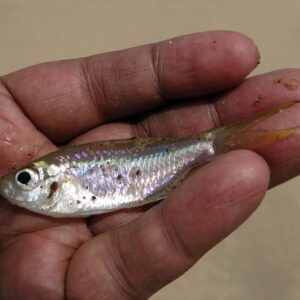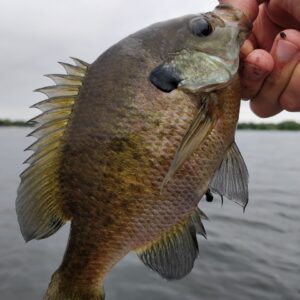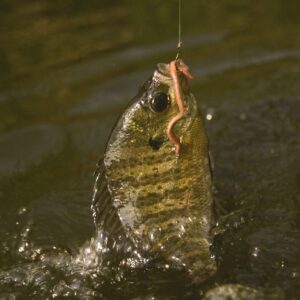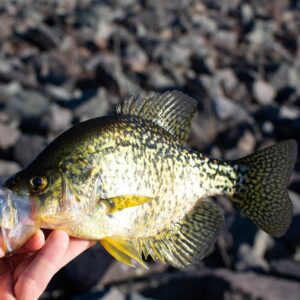Hybrid bluegills are a result of breeding between bluegill sunfish (Lepomis macrochirus) and other related sunfish species, such as the green sunfish (Lepomis cyanellus) or the redear sunfish (Lepomis microlophus). These hybrids are popular in fisheries management and recreational fishing due to their unique characteristics and behavior. Hybrid bluegills are valued for their unique traits and benefits in various aquatic settings, offering a mix of characteristics from their parent species that can enhance fishing opportunities and ecosystem management.
Appearance
Color: Hybrid bluegills often display a mix of the coloration patterns found in their parent species. They may have the bluegill’s distinctive blue-green body with dark spots, but the coloration can vary depending on the exact parentage.
Size: They generally grow larger than pure bluegills but not as large as some other sunfish species. Typical hybrids can reach lengths of 10 to 12 inches (25 to 30 cm), with some individuals growing larger.
Shape: Hybrids may have body shapes and fin structures that reflect traits from both parent species, resulting in varied appearances.
Habitat
Range: Hybrid bluegills are found in many freshwater bodies where their parent species are present. They are often stocked in ponds, lakes, and reservoirs.
Preferred Environment: They thrive in similar environments to bluegills, such as warm, shallow waters with abundant vegetation.
Behavior
Feeding: Hybrid bluegills have a varied diet that includes insects, small fish, and other aquatic organisms. They can exhibit aggressive feeding behavior, especially when competing for food.
Activity: Like bluegills, hybrid bluegills are generally active during the daytime and often seek cover in vegetation or structures.
Spawning: Hybrid bluegills are typically less fertile than their parent species. When they do reproduce, the offspring might not always be true hybrids, and some may revert to traits resembling the parent species.
Advantages in Fisheries
Growth Rate: Hybrid bluegills are known for their faster growth rates compared to pure bluegills, making them desirable for stocking in managed fisheries where quick results are preferred.
Aggressiveness: They can be more aggressive than pure bluegills, which can make them more challenging and exciting for anglers.
Conservation and Management
Management Use: They are often used in aquaculture and sport fishing to control populations of smaller fish or to enhance recreational fishing experiences. Their hybrid vigor often results in strong, resilient fish populations.
Hybrid Sterility: Due to their hybrid nature, some hybrid bluegills may have reduced fertility or may not reproduce as effectively as pure species, which helps manage their populations in stocked environments.





